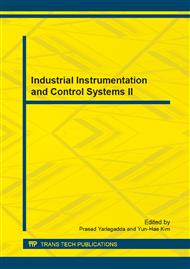[1]
G. Kiczales, J. Lamping, et al. Aspect-oriented programming. Proc. of the European Conference on Object-Oriented Programming (ECOOP'97). (1997).
DOI: 10.1007/bfb0053381
Google Scholar
[2]
Roger T. Alexander, James M. Bieman. Towards the Systematic Testing of Aspect-Oriented Programs. Technical Report, Colorado State University. http: /www. cs. colostate. edu/ ~rta/publications/CS-04-105. pdf., (2004).
Google Scholar
[3]
F rank l P G Doong R. The ASTOOT approach to testing object oriented programs. ACM Transactions on Software Engineering and Methodology, 1994. 3(2): pp.101-130.
DOI: 10.1145/192218.192221
Google Scholar
[4]
Jianjun Zhao. Data-flow-based unit testing of aspect-oriented programs. In Proc of the 27th Annual IEEE International Computer Software and Applications Conference (COMPSAC'03). (2003).
DOI: 10.1109/cmpsac.2003.1245340
Google Scholar
[5]
Dianxiang Xu, Weifeng Xu, et al. A State-Based Approach to Testing Aspect-Oriented Programs. In Proc. of the 17th International Conference on Software Engineering and Knowledge Engineering (SEKE'05). July 14-16, 2005. Taiwan.
Google Scholar
[6]
Dianxiang Xu, Weifeng Xu. State-Based Incremental Testing of Aspect-Oriented Programs. AOSD'06. March 20-24, 2006. Bonn, Germany.
Google Scholar
[7]
Yuewei Zhou, Debra Richardson, et al. Towards a practical approach to test aspect-oriented software. In Proc. 2004 Workshop on Testing Component-Based Systems (TECOS2004). (2004).
Google Scholar
[8]
N. Ubayashi,T. Tamai. Aspect-oriented programming with model checking. In Proceedings of the 1st International Conference on Aspect-oriented Software Development. (2002).
DOI: 10.1145/508386.508405
Google Scholar
[9]
D. Sereni,O. de Moor. Static analysis of aspects. In Proceedings of the 2nd International Conference on Aspect-Oriented Software Development. (2003).
DOI: 10.1145/643603.643607
Google Scholar
[10]
WangLin zhang, Li Xuan dong, et al. An Approach to Generate Integration Test Case s Based on UML Collaboration Diagrams. Acta Electronica Sinica, 2004. 32(8): pp.1290-1296.
Google Scholar
[11]
Joseph D. Gradecki, Nicholas Lesiecki. Mastering AspectJ. 2003: Wiley. 179-184.
Google Scholar
[12]
Maria Tkatchenko, Gregor Kiczales. Uniform Support for Modeling Crosscutting Structure. The 6th International Workshop on Aspect-Oriented Modeling (AOM'05). (2005).
Google Scholar
[13]
Dominik Stein, Stefan Hanenberg, et al. A UML-based aspect-oriented design notation for AspectJ. Proceedings of the 1st international conference on Aspect-oriented software development. 2002. Enschede, The Netherlands.
DOI: 10.1145/508386.508399
Google Scholar


